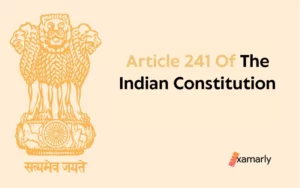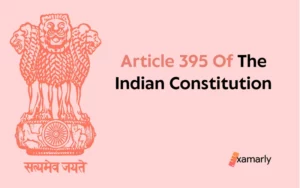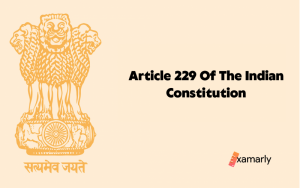Introduction
Among all the Articles that ever got included in the Indian constitution, Article 34 of the Indian constitution is one of the most peculiar ones. One might feel at a glance that it is a paradox to the values that our constitution aims to inculcate among citizens of India.
Paradox like, we have our fundamental rights, so why cannot we practice them whenever we want?
After reading this article about Article 34 of the Indian constitution, you will be able to understand that the constitution of India was developed by visionaries, such visionaries who could predict the arousal of consequences in the context of clashes when we have such a huge diversity. To anticipate the same, they came up with Article 34 in the constitution.
Overview
Article 34 of the Indian constitution as it is stated something like this “34. Restriction on rights conferred by this Part while martial law is in force in any area Notwithstanding anything in the foregoing provisions of this Part, Parliament may by law indemnify any person in the service of the Union or of a State or any other person in respect of any act done by him in connection with the maintenance or restoration of order in any area within the territory of India where martial law was in force or validate any sentence passed, the punishment inflicted, forfeiture ordered or other act done under martial law in the such area”
Now it does seem like a paradox, does not it? Let us explore more about this particular article in upcoming paragraphs.
India is the homeland of diverse beliefs and cultures, an upside to this is the variations in terms of learning and development, but the downside might be a clash of beliefs.
Apart from this, a nation can have an ample number of reasons to face social outrage and turmoil that can become violent as well.
To regain control over any such turmoil, the nation needs to deploy its armed forces as they are trained to tackle any sort of social and natural calamity.
We have a law that facilitates the government to deploy the military in any geographical region of the country in the hour of need. The law is known as ‘Martial Law. Let us get to know more about it.
Martial Law – At A Glance
Martial Law is the imposition of military forces on the general civil administration and functions where the military will be responsible for all the administration and will carry out all the functions of civil authorities.
The supreme control of everything going on in the place the law has been imposed on will be in the hands of the military rather than civil authorities like police forces, among others. No other administrative department can interfere in the functioning of the military.
Also, all the fundamental rights of people would be voided till the time law is ruling the area. Fundamental rights can contribute exceedingly to the turmoil and is a risk factor.
All the functioning protocols like freedom of religion, religious instructions, acquisition of estates, and religious worship, among others, will be regulated as per the orders by military forces.
But wait, does it sounds similar to when the government imposes National Emergency? Let us find out the difference between Martial Law and National Emergency.
Related – Article 33 Of The Indian Constitution
Martial Law vs National Emergency
Although these two concepts sound very similar to each other, there are some subtle differences that segregate both from each other.
Have a look at this table to have a clear idea about both of them.
| National Emergency | Martial Law |
| It has control over the relationship between the state and the Centre. All the transactions and affairs are undertaken. | It only controls the fundamental rights of the people and is untouched by every other aspect. |
| Situations like War and armed rebellion prevail in the imposition of a National Emergency. | Situations like social disturbance and breakdown of law prevail Martial Law |
| It can be imposed on a whole country. | It can be imposed on a particular area. |
Article 34 Of The Indian Constitution – In Particular
Anticipating one such possibility, the very founders of our constitution inserted Article 34. Article 34 of the Indian constitution, if put simply says that in a situation where the area is under Martial Law, if a military official or one such person who is serving the union exercises his powers and acts in an attempt to restore harmony of that particular area then he would be compensated lawfully by the Parliament for his actions.
This indemnification is valid only if the act has taken place within the territorial boundary of India.
The Article also states that the Parliament will validate any sentences passed, any punishment inflicted or any act that has been committed within the area which is under martial law.
Summing Up
All in all, we conclude from the article is that government has all the power and authority that is pivotal to regulate the nation.
So, even if it is imposing a regulation that might not sync with everyone, it is for the best of the people residing in the country. Article 34 is one such example where government voids the fundamental rights of people in extreme circumstances like Martial Law situation.
It does not imply that the government is snatching away the basic fundamental rights but just restricting them for a while by giving the authority to armed forces rather than police forces to balance out harsh situations that are beyond the grips of any other authorities.
FAQs
How are fundamental rights affected under Martial Law?
The fundamental rights are made null and void during martial law in an evident perspective that fundamental rights might contribute to the turmoil and may increase it to any extent.
What is Martial Law?
Martial Law is the imposition of military forces on the general civil administration and functions where the military will be responsible for all the administration and will carry out all the functions of civil authorities.






